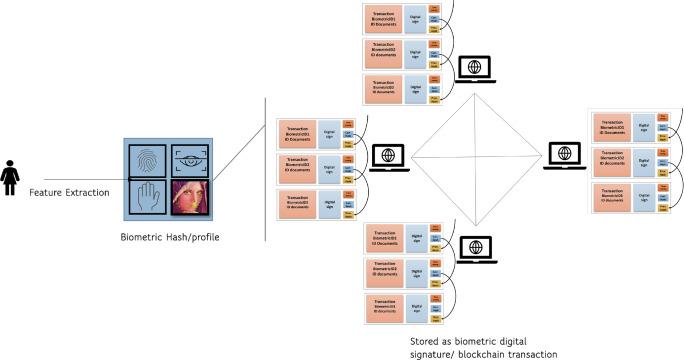Verifying Qualifications: How Blockchain Technology Is Transforming Credential Authentication
In today’s digital world, proving academic and professional qualifications is more important—and challenging—than ever. Employers, educational institutions, and individuals alike struggle with verifying certificates, degrees, and credentials efficiently and securely. Fortunately, blockchain technology is rapidly transforming the landscape of credential authentication, offering a future where verifying qualifications is fast, transparent, and tamper-proof.
- Blockchain delivers secure, transparent, and immutable records of credentials.
- Reduces resume fraud and speeds up the verification process.
- Empowers candidates to own and manage their verifiable digital credentials.
Why Credential Authentication Needs a Revolution
Traditional methods of verifying qualifications are time-consuming, costly, and unreliable. Physical certificates are vulnerable to loss, forgery, and manipulation. Even digital copies, typically stored in siloed institutional databases, can be altered or faked. This lack of clarity leads to:
- Wasted resources on manual checks
- Delayed hiring or admissions processes
- Legal and reputational risk due to fraudulent claims
As industries become more global and talent more mobile, the need for a secure, scalable system for verifying academic and professional credentials is now a worldwide concern.
Understanding Blockchain Technology in Credential Authentication
At its core,blockchain is a decentralized,distributed ledger technology. It records data in blocks linked cryptographically, creating an immutable and highly secure record. In the context of educational and professional credentials, blockchain acts as a trustless, peer-validated network to authenticate qualifications.
How Does Blockchain Credential Verification Work?
- An educational or certifying institution issues a digital credential and writes its unique cryptographic hash onto the blockchain.
- The individual receives a digital record (frequently enough in the form of a verifiable credential or digital badge) linked to this hash.
- Employers, institutions, or other verifiers can instantly check the authenticity of the credential by matching the record to the blockchain—no intermediaries or time-intensive phone calls required.
Key Benefits of Blockchain in Credential Verification
- immutability: Once recorded, data on the blockchain cannot be altered or removed, ensuring lifelong proof of qualifications.
- Transparency: All parties have access to the same trustworthy records, eliminating the risk of misinformation.
- Speed: Instant credential verification removes needless delays in recruitment and admissions.
- Cost Savings: Automated verification reduces administrative overhead and reliance on third-party verification services.
- Privacy and Control: Individuals own their credentials and decide with whom to share them, in compliance with data privacy laws like GDPR.
Real-World Case Studies: Blockchain for Credential Verification
MIT and Blockcerts
The Massachusetts Institute of Technology (MIT) pioneered the use of Blockcerts, an open standard for creating, issuing, viewing, and verifying blockchain-based certificates. Graduates receive cryptographically signed digital diplomas,which can be independently verified anywhere in the world,instantly.
Europass Digital Credentials
Europass, the EU initiative for digital skills and jobs, is deploying blockchain technology to issue digital credentials across member countries.This aids cross-border recognition and streamlines the labor market for millions of European professionals.
World Education Services (WES)
WES has teamed up with blockchain startups to digitize and secure foreign credential evaluation, helping immigrants and refugees present secure, verifiable credentials to Canadian and US employers and institutions.
Challenges and Limitations to Adoption
While blockchain technology brings immense promise to the world of credential authentication, its adoption faces several hurdles:
- Standardization: there’s a need for global standards to ensure interoperability across institutions and jurisdictions.
- Scalability: existing blockchain systems must continue to scale to handle vast volumes of credentials efficiently.
- Legal and Regulatory Clarity: Policies must evolve to accommodate digital identities and blockchain records.
- Technical Literacy: Institutions must invest in training and upgrading their technical infrastructure.
nonetheless, strong industry collaborations and rapid technological advancements are actively addressing these challenges.
Practical Tips for Institutions and Individuals
For Educational and Certifying Institutions
- Explore partnerships with established blockchain credential platforms such as Blockcerts, Learning Machine, and Accredible.
- Invest in staff training around digital credential issuance and verification.
- Participate in pilot programs to better understand integration processes and benefits.
- Communicate with students and alumni about the value and usage of blockchain-verified credentials.
For Individuals, Professionals, and Graduates
- Request digital, blockchain-verified credentials from your educational institutions.
- Maintain a secure digital wallet for your credentials and regularly update records.
- Share verifiable links to your credentials on CVs, LinkedIn profiles, and job applications.
- Stay informed of the changing landscape of digital identity and data privacy.
Future trends in Blockchain-based Credential Authentication
Looking ahead, blockchain and related technologies like Decentralized Identifiers (DIDs) and Verifiable Credentials are set to reshape not just education, but all areas where qualifications and identity matter. Expect to see:
- Universities and major employers mandating digital, blockchain-verified credentials for all new credentials issued.
- Automated,AI-driven analysis of verifiable qualifications during recruitment.
- Interoperable global systems supporting cross-border labor mobility and international study.
- Greater individual control over personal data and digital identity.
Conclusion: How Blockchain Is Shaping the Future of Trusted Credentials
The ability to securely, efficiently, and transparently verify qualifications is more critical now than ever. Blockchain technology for credential authentication delivers on this need—ushering in an era where skill, trust, and achievement are instantly and universally recognized.
As the adoption of blockchain-based credentialing accelerates, institutions, employers, and individuals must stay proactive, embracing new standards and technologies to thrive in the digital credentials revolution. The future promises an education and workforce ecosystem built on transparency, mutual trust, and seamless global mobility—all thanks to the transformative power of blockchain.

